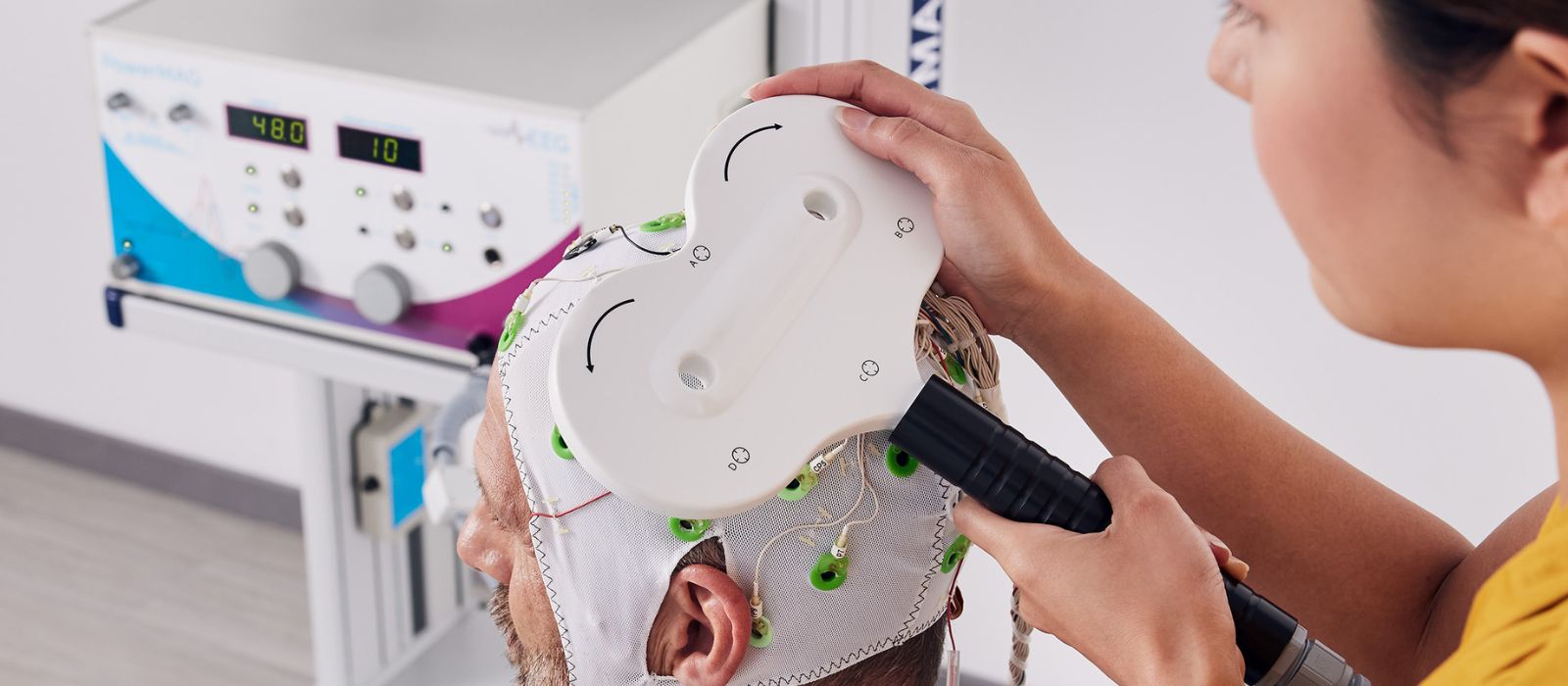Applications of TMS in Neuroscience
Find out which research areas are emerging in TMS and integrated technologies.

Neuroscience applications
Navigated TMS
The use of TMS in research requires an individual and precise positioning of the TMS coil at the selected brain region. MR-based neuro-navigation systems can visualize the electromagnetic hot-spot of the coil in real-time at an individual, anatomical MR-data record. This enables the user to stimulate the target with great precision and makes reproducibility of the TMS set-up easier.
Clinical Research
Clinical TMS research evaluates the safety and effectiveness of targeting specific areas of the brain to treat neurological and psychiatric diseases. Unlike pharmaceuticals, TMS is a non-systemic treatment without body-wide side effects.
Multi-modal TMS
Using TMS in conjunction with other techniques allows for a more complete understanding of the human brain. TMS can be combined with various neuroimaging and neurophysiological technologies as EEG, MEG, EMG, PET, fMRI, NIRS or DTI. The combination of TMS with other techniques can show neuronal interactions and connectivity between different brain areas.
Event-related Fast TMS
Event-related TMS depicts the combination of TMS together with a specific, cognitive task. Examples are stimulating the visual cortex while the subject is shown pictures, or stimulating Broca’s area while asking the subject to talk. As TMS is very focal and hence only influences very specific brain regions it is a very instrumental technique towards studying the brain’s interconnections and functionalities while performing cognitive tasks.
Multi-side TMS
Multi-side TMS describes the use of multiple independently controlled stimulation coils which all are stimulating one subject. It is used for the investigation of functional connectivity within complex interconnected networks. By varying the timing and location of each coil, the temporal and spatial relationships between brain regions can be investigated. The operator can e.g. stimulate multiple locations with or without time delay between the stimulation pulses. It is for instance possible to suppress one hemisphere while activating the other stimulation side.
EEG & TMS
Experimental brain research can benefit enormously from pain-free and non-invasive stimulation options. As such, TMS can induce a temporary functional disturbance in a focal area of the cortex. This lesional effect can be characterized by psychophysical measurements and lead to important conclusions about the functional relevance of the stimulated area of the cortex.
Real-time EEG Triggered TMS
A hot topic in today’s brain research is state-depending modulation of brain networks in real time by applying personalized TMS patterns. This real-time application allows you to investigate cortical excitability and induction of long lasting plasticity in network pathways with respect to the „right“ timing with the „right“ TMS stimuli.
Quattro Pulse Stimulation
This innovative, new patterned repetitive transcranial magnetic stimulation protocol called quadri-pulse stimulation (QPS) can generate a broad range of motor cortical plasticity ranging from MEP suppression to MEP facilitation. In addition to evoking lasting cortical plasticity changes, QPS can also be used to evaluate priming effects: when used as a priming stimulation, which does not induce an LTP- or LTD-like phenomena itself, it can nevertheless change the threshold for LTP- or LTD-like plasticity caused by consecutive stimulations.
Animal Research
Translational and basic research are the major areas of TMS applications in animals. The use of animals has advantages in terms of subject homogeneity, disease models and available histology.